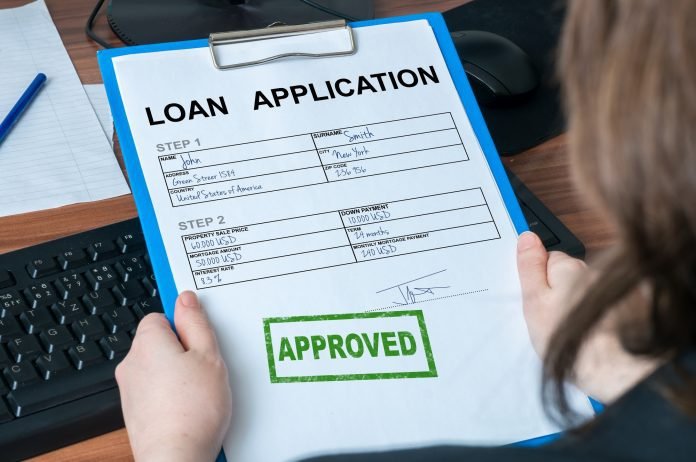Last Updated on March 12, 2024 by admin
Did you know that home equity has soared due to rising home prices? Most homeowners have seen home equity increases, adding $200,000 to their original prices. Amid a global pandemic and an unstable housing market, most people have (rightfully so) chosen to either repair their current homes or get homes that are fixer-uppers. Yet, most of us don’t have piles of unused cash that we can use for home renovation. That’s where home renovation loan rates can make or break our plans. Suppose you’ve been thinking about getting a home renovation loans; no worries. We’ve got your back. Keep reading for our full breakdown of everything you need to know regarding your home renovation loan options.
Table of Contents
What Is a Home Improvement Loan?
In simplest terms, a personal loan intended to fund home improvements and repairs is known as a home improvement loan.
You may be able to utilize it for a big project, like a kitchen or bathroom renovation, basement restoration, garage construction, or pool installation. The loans may also be utilized for minor projects, like replacing your windows or adding solar panels.
Home renovation loans are sold separately from home equity loans by specific lenders.
Main Characteristics of Home Improvement Loans
Usually, there’s no collateral required. Home renovation loans, like most personal loans, are unsecured.
This implies they won’t ask for collateral, which means your home won’t be in danger if you can’t make payments. Interest rates are higher than on secured loans.
Like other unsecured loans, home renovation loans have higher interest rates than secured loans like home equity loans or property equity lines of credit (HELOCs), which utilize your home as collateral.
Next, you have monthly installments and a fixed APR. Fixed interest rates and monthly installments over a specified number of years are common features of home renovation loans.
As a result, you’ll know precisely how much your loan will cost, and you’ll be able to plan appropriately.
Besides, quick lump-sum financing is available. In as little as one to three days, a lender may be able to deposit a home renovation loan into your bank account. Loans are available in quantities ranging from $1,000 to $100,000.
Should You Use Home Renovation Loan Rates to Get Home Improvements?
It is debatable. Home improvement loans have higher interest rates than home equity loans and HELOCs since they are unsecured.
However, you’ll have to put your house up as collateral to utilize those financing alternatives. You’ll also need adequate equity in your house, which is the gap between the amount you owe on your mortgage and the value of your property. The size of your equity determines the amount you may borrow.
You won’t need equity to get a home renovation loan and won’t worry about losing your house. However, if you fail on your loan, you may anticipate a significant decrease in your credit score and a default notice that might remain on your credit record for up to seven years.
If you have excellent credit, qualifying for a home renovation loan is typically easier than applying for another financing, such as home equity loans. In such a scenario, proving income and work may be all that is required.
A personal loan may be an option even if you have bad credit. With good to outstanding credit, you’ll almost definitely receive the greatest interest rates, but if you have a solid work history and use credit responsibly, some lenders may still give you a loan.
Understanding Specialized Loans: The HELOC Edition
HELOC (Home Equity Line of Credit) is a revolving credit line you may use as needed. HELOCs are similar to credit cards in that you may take out as much as you need at any moment, up to your credit limit.
The amount you pay each month is determined by the current interest rate and the amount you owe. You have the option of paying it off over time or all at once. HELOCs are an excellent choice for smaller, less costly, or ongoing projects.
The draw phase of a HELOC allows you to use your credit line as much and as frequently as you need while paying down the interest each month. You will start the repayment phase after a specified period (usually 10 years). You are no longer able to withdraw funds from your credit line.
Instead, when the loan is completely amortized throughout the balance of your term, you will make monthly payments on the interest and principal.
How to Compare Home Improvement Loans
Pre-qualifying and shopping around may help you discover the best loan with the most significant rate and features. These are a few key things to consider when comparing home renovation loans.
First, the APRs (annual percentage rates) reflect the loan’s total cost, including any fees the lender charges. It may be the best place to start if you’re a credit union member. Federal credit unions have a maximum APR of 18%.
Second, the loan amount. Some lenders have a $35,000 or $40,000 maximum loan limit. If you believe your project will cost more than that, seek a lender that will give you a larger loan.
Third, the loan duration. A long repayment period may have cheap monthly payments, but you’ll pay more interest throughout the life of the loan than a shorter payback term. You may use a home improvement loan calculator to estimate loan payments with various terms.
Fourth, you can add a co-signer or co-borrower to your loan application. Some lenders allow you to add a co-signer or co-borrower to your loan application. Including someone with superior credit or a higher salary on your loan application may help you lower your APR or borrow more money.
Getting a Home Improvement Loan
To apply for a home renovation loan, compare lender offers to other alternatives, verify your rate and monthly payments, prepare papers, and then apply. Of course, you can take the high-quality shortcut and check out the Plenti Home Improvement Loan.
Now, let’s have a look at each step.
Start by considering your choices. Compare and contrast the top home improvement lenders with other financing alternatives, such as credit cards and home equity loans. You’re searching for the one with the lowest overall interest cost, manageable monthly payments, and a timeframe that works for you.
Next, you’ll want to examine your interest rate and monthly installments. This phase should help you estimate the cost of your project. Before applying for a personal loan, many online lenders and banks allow customers to pre-qualify to view possible offers — but you’ll be asked how much you want to borrow. A gentle credit draw is used in this procedure.
Now, it’s time to prepare the necessary papers. Gather the papers you’ll need to apply after you’ve decided on a lender. W-2s, paystubs, proof of residence, and bank information are examples of what you may need.
Send in your application. Smaller banks and credit unions may need you to apply in person, while bigger banks and internet lenders often provide online applications.
Many lenders may decide within a day or two of receiving your application. After that, the money should appear in your bank account within one to seven business days.
Alternative Finance Options
Your house is not required as security for all remodeling loans. There are a variety of different loans available to assist you in making home renovations.
We’ll explore them one option at a time.
Personal Loans and Credit Lines
Unsecured loans, such as personal loans and lines of credit, do not require you to put up collateral, so you don’t have to worry about losing your home or vehicle if you can’t pay back the loan.
Personal loans are faster and easier to handle and approve than refinancing or home equity loans since they need less documentation. The advantages revolve around not needing home equity or collateral.
Also, there’s no need for an assessment, which is a huge plus if your house is in bad shape. In most cases, you’ll be getting quick access to funds.
On the other end of the spectrum, we have disadvantages. First, you’ll see higher interest rates than average, particularly for consumers with bad credit.
Loans are only available up to $100,000. And personal lines of credit are revolving lines of credit that enable you to borrow as much as you need up to the credit line’s maximum.
Ready to Give Your Home a Makeover?
If there’s anything we’ve learned from spending way too much time in our homes, it’s that we haven’t been treating them right.
Yet, home renovations don’t have to break your finances completely. We hope that our guide has shed some light on how you can get the best home renovation loan rates for your needs.
And, if you’re hungry for more information on improving your home, you’ll want to check out our other blogs. Start by skimming through our real estate and lifestyle sections for all the tips and tricks you could possibly need.
Overview
Home renovation loans are a popular option for homeowners who want to improve their homes but do not have the cash to finance the project themselves. This guide will provide a unique overview of home renovation loan rates, including the different types of loans available and what factors can impact the interest rates you will receive.
First, it is important to understand that two main types of home renovation loans are secured and unsecured. Secured loans require collateral, such as your home or other valuable assets, while unsecured loans do not. Secured loans typically have lower interest rates than unsecured loans because the lender has more security in the event that you cannot repay the loan.
Another factor that can impact your home renovation loan rates is your credit score. If you have a high credit score, you are more likely to qualify for lower interest rates. Lenders will also consider your income, debt-to-income ratio, and the equity you have in your home when determining your loan rates.
In addition to traditional banks and credit unions, some online lenders offer home renovation loans. These lenders often have more flexible eligibility requirements and can provide faster approval times than traditional lenders. However, they may also charge higher interest rates and fees.
Apart from that, if you are interested to know about Things Not To Do While Renovating Your House then visit our category.






















